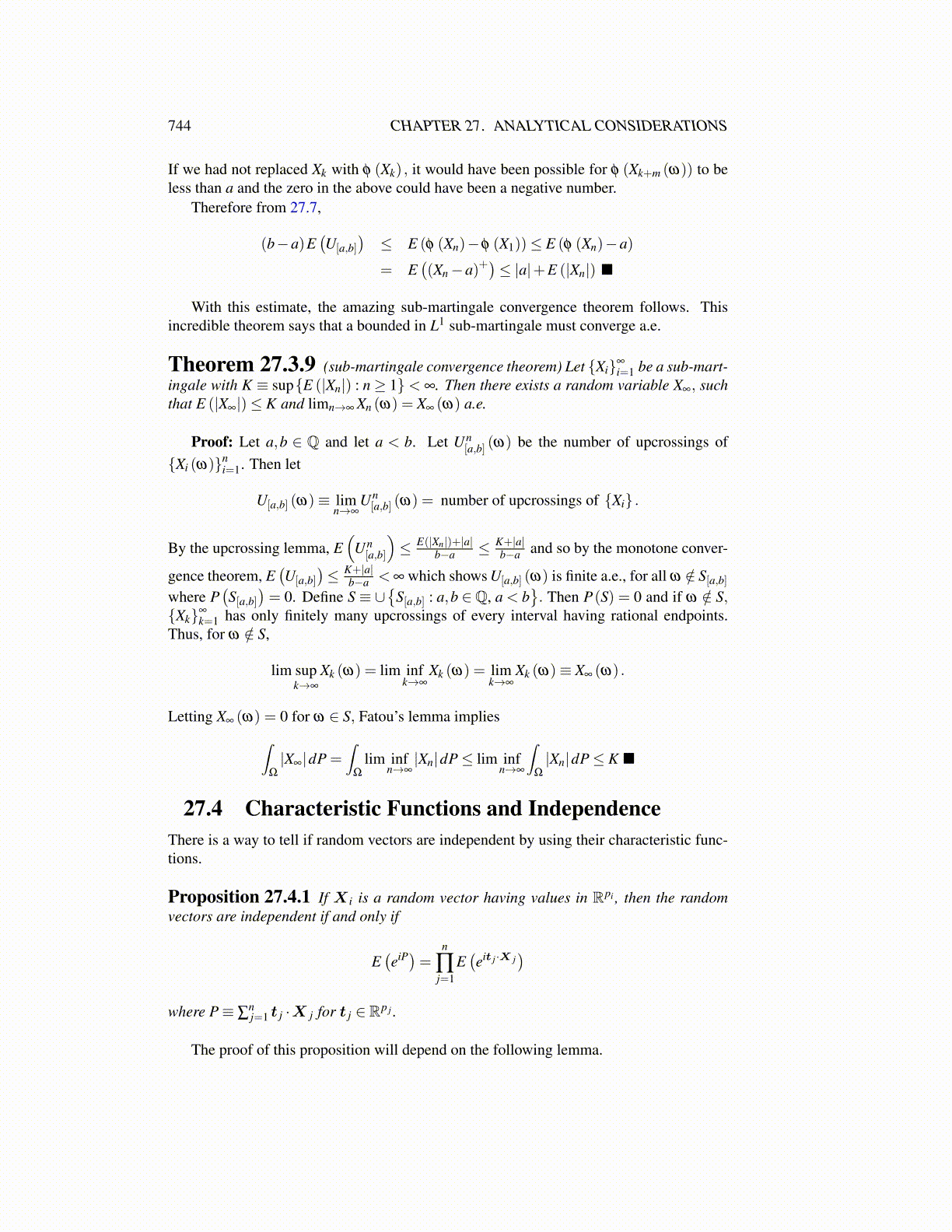
744 CHAPTER 27. ANALYTICAL CONSIDERATIONS
If we had not replaced Xk with φ (Xk) , it would have been possible for φ (Xk+m (ω)) to beless than a and the zero in the above could have been a negative number.
Therefore from 27.7,
(b−a)E(U[a,b]
)≤ E (φ (Xn)−φ (X1))≤ E (φ (Xn)−a)
= E((Xn−a)+
)≤ |a|+E (|Xn|) ■
With this estimate, the amazing sub-martingale convergence theorem follows. Thisincredible theorem says that a bounded in L1 sub-martingale must converge a.e.
Theorem 27.3.9 (sub-martingale convergence theorem) Let {Xi}∞
i=1 be a sub-mart-ingale with K ≡ sup{E (|Xn|) : n≥ 1}< ∞. Then there exists a random variable X∞, suchthat E (|X∞|)≤ K and limn→∞ Xn (ω) = X∞ (ω) a.e.
Proof: Let a,b ∈ Q and let a < b. Let Un[a,b] (ω) be the number of upcrossings of
{Xi (ω)}ni=1. Then let
U[a,b] (ω)≡ limn→∞
Un[a,b] (ω) = number of upcrossings of {Xi} .
By the upcrossing lemma, E(
Un[a,b]
)≤ E(|Xn|)+|a|
b−a ≤ K+|a|b−a and so by the monotone conver-
gence theorem, E(U[a,b]
)≤ K+|a|
b−a < ∞ which shows U[a,b] (ω) is finite a.e., for all ω /∈ S[a,b]where P
(S[a,b]
)= 0. Define S ≡ ∪
{S[a,b] : a,b ∈Q, a < b
}. Then P(S) = 0 and if ω /∈ S,
{Xk}∞
k=1 has only finitely many upcrossings of every interval having rational endpoints.Thus, for ω /∈ S,
lim supk→∞
Xk (ω) = lim infk→∞
Xk (ω) = limk→∞
Xk (ω)≡ X∞ (ω) .
Letting X∞ (ω) = 0 for ω ∈ S, Fatou’s lemma implies∫Ω
|X∞|dP =∫
Ω
lim infn→∞|Xn|dP≤ lim inf
n→∞
∫Ω
|Xn|dP≤ K ■
27.4 Characteristic Functions and IndependenceThere is a way to tell if random vectors are independent by using their characteristic func-tions.
Proposition 27.4.1 If X i is a random vector having values in Rpi , then the randomvectors are independent if and only if
E(eiP)= n
∏j=1
E(eit j ·X j
)where P≡ ∑
nj=1 t j ·X j for t j ∈ Rp j .
The proof of this proposition will depend on the following lemma.